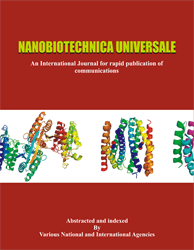Nesting Ecology, Behaviour and Factors Influencing the Survival of Yellow-Wattled Lapwing (Vanellus malabaricus Boddaert, 1783) in Udaipur District, Rajasthan
Narayan Lal Choudhary1*, Hemsingh Gehlot2 , Anil Kumar Sharma3 , Rubin Philip4 and Nadim Chishty5
1*Department of Zoology, Adarsh Mahavidhyalaya (Affiliated to Jai Narain Vyas University) Jodhpur - 342003 (India) 2Wildlife Conservation Laboratory, Department of Zoology, Jai Narain Vyas University, Jodhpur - 342071 (India) 3Dr. Bhimrao Ambedkar Govt PG College, Nimbahera, Chittorgarh - 312601 (India) 4Department of Zoology, St. Berchmans College, Changanacherry - 686101 (India) 5Wildlife, Limnology and Toxicology Research Laboratory, Department of Zoology, Govt.Meera Girls College, Udaipur - 313001 (India) Email id-narayanlalchoudhary1995@gmail.com, gehloths@gmail.com, anilkumarsharma031995@gmail.com, rubin@sbcollege.ac.in, nadimchishty@gmail.com *Corresponding author- Narayan Lal Choudhary
ABSTRACT
Yellow-wattled lapwing (Vanellus malabaricus) is a mediumsized wader bird and belongs to Charadriidae family and Charadriiformes order. It is a ground-nesting bird that typically breeds and build nests in open areas in various microhabitats, such as abandoned fields and playgrounds, edges of forests, agricultural landscapes and riverbanks and sometimes even around wetlands like lakes and human-constructed dams. Breeding season typically begins in from early March and lasts until the end of June, with peck nesting taking place in April and May months. During nesting season, one parent typically stays close to the nest site to monitor the eggs, hatchlings and nestlings. Typically, clutch size ranges from one to four eggs per nest, with three or four being more common than one or two
